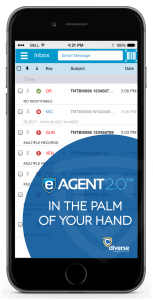10 Must-Have Features for Law Enforcement Technology
- tlui55
- Nov 28, 2018
- 4 min read
Updated: Jul 24, 2019
Public safety agencies are continually tasked with becoming more efficient with fewer resources.
Digital technology is paving the way for higher efficiency and more effective protection of the communities that officers serve, but several major obstacles still exist (including budget cuts, for instance).
This one might surprise you though: There must be agreement on the minimum standards for digital technology if those technologies are to be used successfully.
Think about it: Without a baseline, how can success be measured? And how can we ensure that the technology is helping — not hindering — the work of those who are using it on a daily basis?
So, here are the key features that we believe law enforcement technology should have:
1. It should be available on any device, anywhere.
It should be a given that officers and dispatchers are not tied to their cars or desks in order to achieve their daily tasks. You should be able to access critical information from any secure device — including cell phone, laptop, or tablet — and from any location like the sidewalk, horseback, or even a bicycle.

eAgent 2.0 is available on any secure device, such as your iPhone or Android.
2. It should have updated features for maximum efficiency.
Redundant entries can cause immense frustration. Auto-populating forms are the new gold standard for user experience. Queries should:
produce batched responses,
highlight matching search criteria,
give dispatchers hit notifications, and
allow for integration with popular resources like Google Maps.

3. It should have a modern interface.
You can resize your browser windows on your computer, so why shouldn’t that same rule apply to all of your software? The most efficient interfaces allow for resizing to fit smaller screens in particular. And a bonus of the modern interface: it’s easier to learn…
4. It should be easy to learn.
You can update to a fancy new software, but there will be lots of complaints and resistance if the learning curve is too sharp. A great NCIC eJustice access software should look similar to your email inbox so that new users know intuitively how to operate it and can adopt it quickly.
5. It should be easy to install.
We hear complaints about Java almost daily. It’s powerful, but as soon as there’s an update, which happens almost every month, the entire system can break. This is simply unacceptable in the public safety sector where time is a critical resource.
The best software is actually a web-based service. That means you get a simple URL and login information — which also means that no data is stored on any devices!
6. It must be cost-effective.
With constant budget cuts and heavy workloads, public safety agencies do not have the resources to constantly update or fix software that doesn’t work properly.
Your software should also have all the features you want with none of the extra junk that ends up costing your agency extra money. You should feel like you’re getting value for your money, not like you’re stuck with something expensive and problematic.
And you shouldn’t have to pay extra for tech support… Which brings us to #7 on our list.
7. It should come with personalized technical support.
Remember the good old days when you called customer support and talked to a real person who was happy to help you solve the issue on the first call? Well, we believe that keeping things “old fashioned” in this respect is key to success.
Your IT shop shouldn’t be inundated with calls and requests for help. Keep the load off your IT folks (and save money and resources) by having the people who actually create the software providing you the customer support you need.
And it should go without saying that this support should be available beyond the hours of 9-5, because your job extends beyond those hours too. All of your questions, calls, and emails should be answered personally by an industry expert any time you need them.
8. It should be created and managed by industry experts.
Just like you wouldn’t want a chef performing your open-heart surgery, your law enforcement software should be supported by those who have actually worked in the field.
Criminal justice should be the entire business of your software provider, not just a side gig. That means that your features should be inspired by input from those who are actually out in the field, using the program every day.
9. It should be CJIS compliant.
We all need to be compliant with the CJIS Security Policy — you don’t want to risk getting dinged on an audit or your victim and criminal information being susceptible to hackers.
With software that’s managed by industry experts, the compliance should be constantly verified by on-staff CJIS audit and compliance experts and include things like two-factor authentication requirements for users.
10. The settings should be customizable for each user.
Your provider should understand that no two users are exactly alike. Each user has different needs and tastes, so you should be able to customize your interface to work for you with things like favorite forms, recent forms, and smaller or larger text size.
But is all of this realistic?
We think so. Access to the most updated technology and adhering to industry standards would allow agencies to:
Stick to budgets,
Reduce response time, and
Decrease crime.
Having all of these features might seem like a pipe dream, but to the folks at Diverse Computing and their eAgent customers, these are a reality.
So, how does your agency stack up to these basic must-haves? Read more on law enforcement software here.



Comments